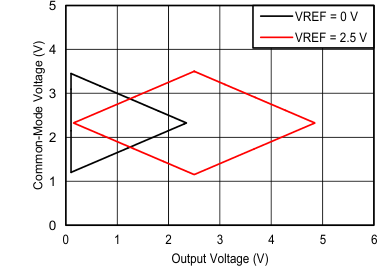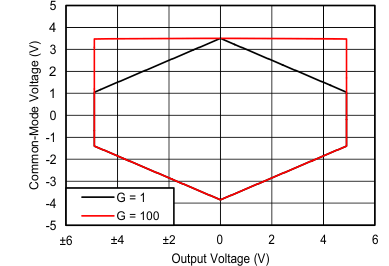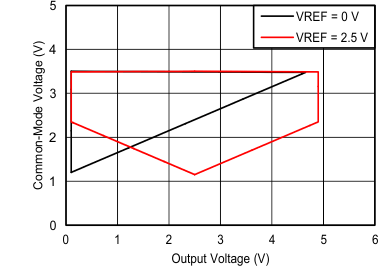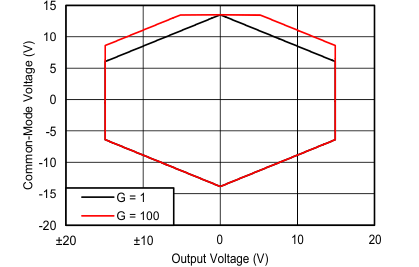JAJSFX6C August 2018 – July 2019 INA821
PRODUCTION DATA.
- 1 特長
- 2 アプリケーション
- 3 概要
- 4 改訂履歴
- 5 Device Comparison Table
- 6 Pin Configuration and Functions
- 7 Specifications
- 8 Detailed Description
- 9 Application and Implementation
- 10Power Supply Recommendations
- 11Layout
- 12デバイスおよびドキュメントのサポート
- 13メカニカル、パッケージ、および注文情報
パッケージ・オプション
メカニカル・データ(パッケージ|ピン)
サーマルパッド・メカニカル・データ
- DRG|8
発注情報
8.3.3 Input Common-Mode Range
The linear input voltage range of the INA821 input circuitry extends within 2 V of power supplies and maintains excellent common-mode rejection throughout this range. The common-mode range for the most common operating conditions are shown in Figure 58 toFigure 61. The common-mode range for other operating conditions is best calculated using the Common-Mode Input Range Calculator for Instrumentation Amplifiers.

| VS = 5 V | G = 1 |

| VS = ±5 V | VREF = 0 V |

| VS = 5 V | G = 100 |

| VS = ±15 V | VREF = 0 V |